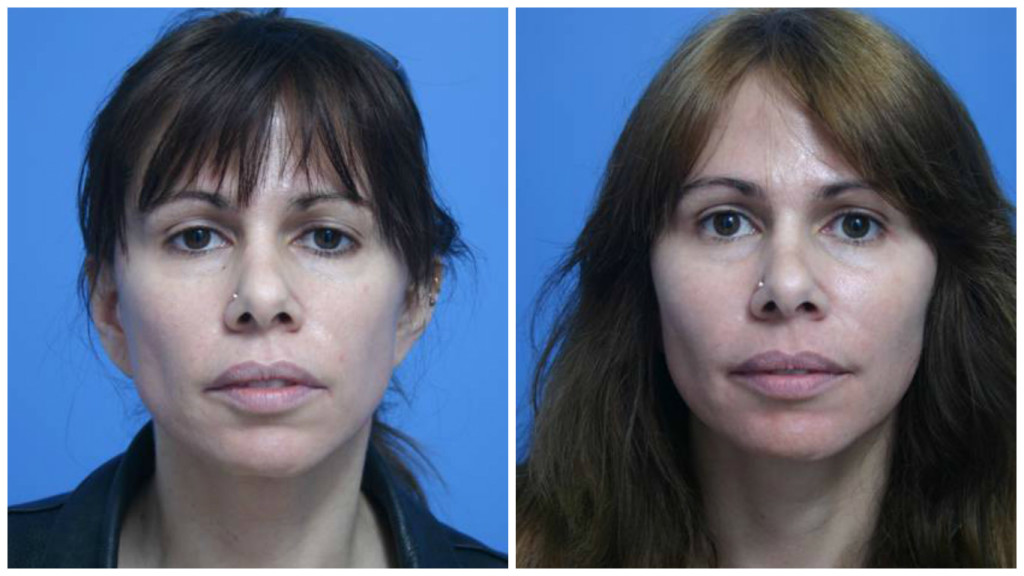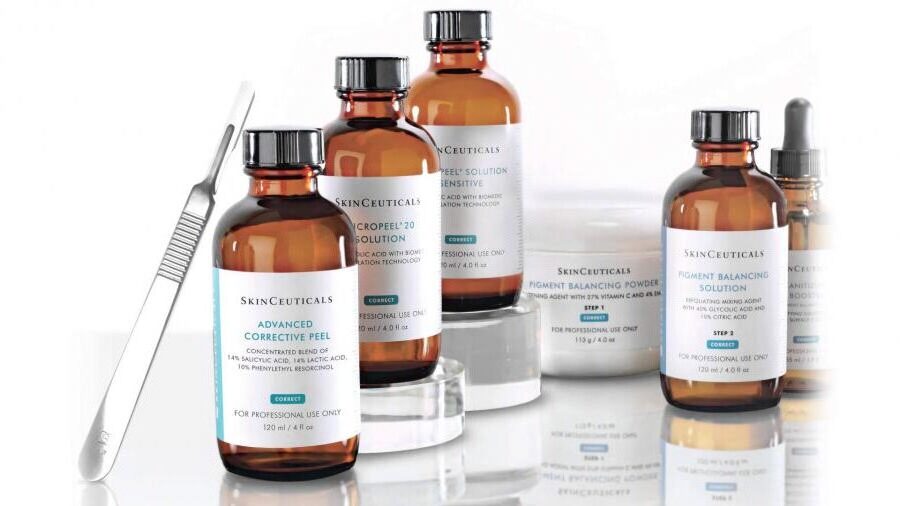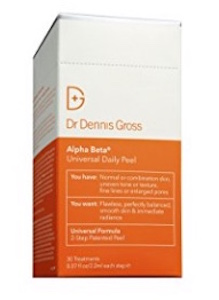- The main difference between medical grade, in-office, and over-the-counter peels is the percentage of active ingredients.
- Getting a medical grade peel outside of a clinical setting may cause permanent scarring and disfigurement.
- Superficial peels using over-the-counter products can be safely performed without a doctor’s supervision.
There are very few skin treatments that are as effective, time-tested, and gratifying as the chemical peel. A growing number of women – and men – are resorting to peels of various strengths to help give their skin a brighter, more youthful glow.
Whether you follow your own recipe at home, buy your products over-the-counter, or receive treatments at the local medical spa, the chemical peel you choose should take into account your skin type, lifestyle, and specific needs.
I recently interviewed several skin care experts to find out what pre-holiday pampering they recommend, and along with a few dedicated friends, tested some treatments. As you will soon see, choosing the right peel from the wide range of products on the market can be quite challenging.
What Chemical Peels Are Made Of
Peels are mildly acidic chemical solutions that are applied to the face and neck, causing the skin to exfoliate. The results vary depending on a number of factors but are primarily determined by the strength of the peels themselves and their frequency of use.
As Chicago plastic surgeon Dr. John Cook explains, “the major differentiator between medical grade, in-office peels and over-the-counter, home peels is the percentage of active ingredients. This has a direct bearing on the efficacy of the peel.”
According to the American Society for Dermatologic Surgery (ASDS), there are three basic types of chemical peels:
1. Superficial or “lunchtime” peels ($100-300)
Alpha-hydroxy acid or another mild acid is used to penetrate only the outer layer of skin and gently exfoliate it. The treatment improves mild discoloration and rough skin.
Plastic surgeon Dr. Anthony Youn of Troy, Michigan shares a recipe for an inexpensive, do-it-yourself peel made of apple juice, milk and egg white in his recent book, The Age Fix. “A real peel will cause more change, but this is a great all-natural maintenance treatment,” he explains. Watch him demonstrate how to do it in this video, beginning at the 00:07:11 mark.
I asked a 45-year-old friend of mine to try out Dr. Youn’s concoction. She reported that while she found it easy enough to make and mildly effective, giving her skin a very temporary lift and added suppleness, she never did actually peel, and told me she wouldn’t use it on a regular basis because the results simply weren’t up to her expectations.
2. Medium peels ($600-1000)
Glycolic or trichloroacetic (TCA) acid is applied to penetrate the outer and middle layers of the skin and remove damaged skin cells. The treatment improves age spots, fine lines and wrinkles, freckles, moderate skin discoloration, rough skin and some precancerous skin growths.

Medium-depth TCA peels such as the Obagi Blue Peel, which when applied turns dark to safely measure the depth of the chemicals underneath the skin, can provide excellent results with just one treatment.
3. Deep peels ($2,000-6,000)
Tricholoracetic acid or phenol is applied to deeply penetrate the middle layer of skin on the face and remove damaged skin cells. The treatment improves the appearance of moderate lines, age spots, freckles and shallow scars. It can only can be performed once, however, but provides results that can last several years.
Due to their strength, cost, and notable downtime, deep peels were not tested for this article. “Doing a deep or a medium-depth (superficial dermis) peel without a doctor’s guidance can be very dangerous and cause permanent scarring and disfigurement. Phenol can also be toxic for the heart when overused,” warns Dr. Youn.
Professional Peels: What the Experts Recommend
My research eventually brought me to Dr. John Cook’s practice, where medical aesthetician Andrea Hochstedt suggested a PCA Sensi Peel 6% TCA solution ($150) after evaluating my 45 year-old, sun damaged, combination skin. She explained that there are several types of ingredients that comprise peels: glycolic acid, azelaic acid, trichlorocetic acid, pure retinol, and other chemicals that can be used in different combinations or on their own, depending on the patient’s skin type and esthetic goals.
Some professionals use peels as a pre-treatment for laser or IPL (intense pulsed light) procedures. As Dr. Cook explains, “peels thin the stratum corneum – the rough, difficult to penetrate top layer of skin – allowing for better penetration of the IPL light. The combination of this therapy with the ability to customize it to meet clients’ various individual needs provides optimal results, enhancing the overall outcome of the IPL or laser procedure.”
“We strongly believe that to achieve the best aesthetic result – or for that matter any result at all, – only medical grade chemical peels should be used,” says Hochstedt. “Our peels are formulated with ingredients found naturally in the skin and body, which allows for maximum biocompatibility.”
The professional peel application Andrea gave me felt more like a breezy facial than any of the stinging spa peels I’ve had in the past. The actual peeling began two days after the treatment and looked like a sunburn, but without the redness. The only discomfort was the brief sting I felt when applying Clini Calm, a hydrocortisone ointment.
Three days later, after using Dr. Cook’s products to treat my face twice a day, I was amazed at how shiny, tight, and soft my skin appeared. Based on how the peel felt during application, the effectiveness of the after care product and the final results, I would certainly recommend the experience.

Gity Moslem, owner of iBeauty Clinic in Chicago, offers PCA and trichloracetic acid peels ($45-$89) to clients seeking less aggressive – and more affordable – options. Not everyone is a suitable patient, though. An evaluation by a doctor or competent esthetician is required if you have sensitive skin, rosacea, or are taking certain medications. If you’re using Accutane, for example, it’s recommended that you wait six months after your last treatment. And if you smoke, you’ll need to quit two weeks before getting a chemical peel, as smoking can cause extra skin sensitivity. Pregnant women should avoid peels altogether.

Chicago-based esthetician Sarah Robinson, an Aveda Institute-trained aesthetician who has been working in skincare since 1997, opts for natural enzyme peels and mechanical exfoliants to stimulate cell turnover. “I recommend SkinCeuticals GL Professional Peels every 4 to 8 weeks as a more progressive approach,” says Robinson, who also stresses the importance of applying sunscreen after any peel in order to prevent pigment damage.
Over-The-Counter Chemical Peels

Dr. Dennis Gross Skincare Alpha Beta Universal Daily Peel
Over-the-counter peels like Dr. Dennis Gross’ Alpha Beta Universal Daily Peel are “a great, gentle way to exfoliate,” explains Dr. Youn. Designed for sensitive complexions and first time users, this affordable, time efficient, and gentle product promises glowing skin with absolutely no recovery time. A friend of mine with sensitive, dry skin tried it and reported a tingling at first, but no peeling afterwards. Although it did produce a noticeable brightening and lift, she said in the future she’ll reach for a stronger product that’s more effective for treating fine lines and wrinkles instead.

MD Complete Non-Irritating Pro Peel
MD Complete Non-Irritating Pro Peel by Dr. Brian Zelickson offers another at-home, light peel option. A friend with combination skin tried it for five days and was impressed by how easy it was to use. She did not peel, however, although the product did improve her skin’s tone and texture. While a slightly stronger peel would probably have been more effective on the wrinkles and acne blemishes she was hoping to address, this remains an excellent, short term pick-me-up option nonetheless.
Superficial peels such as these over-the-counter products are “safe to use without a doctor’s supervision” states Dr. Youn. Still, it’s important to follow the instructions for any at-home product and make sure it’s suitable for your skin type. And if you’re trying a product for the first time, it’s always a good idea to test it on a small patch of skin before using it on your entire face.
“Doing it yourself skips the important step of having a medical professional examine your skin,” notes Dr. Cook. “Over-the-counter peels are sub-optimally effective at best, and even harmful in the worse cases. If a patient has highly sensitive skin, an at-home peel could produce inflammation or, even worse, scarring.”
Final verdict: over-the-counter treatments can be beneficial as part of a balanced skincare regimen, but for more effective, long term results, consulting a professional far and away remains the best approach.









